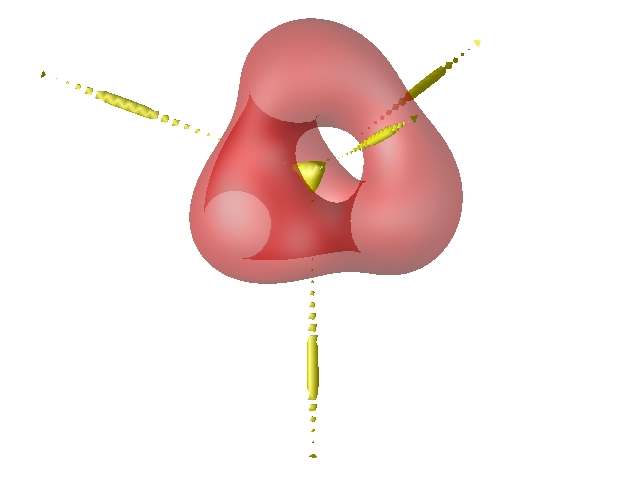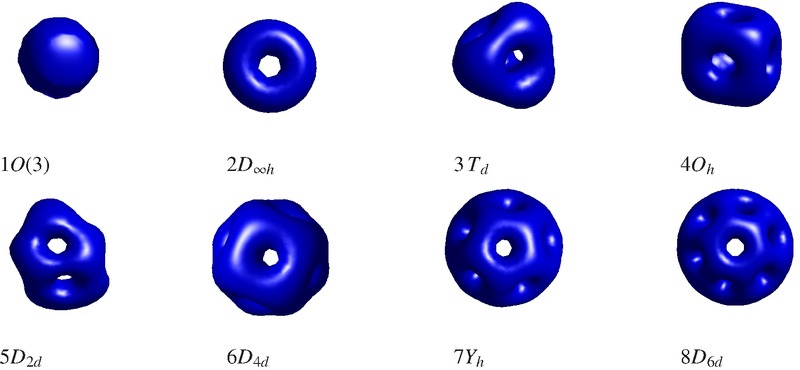Skyrmions arise as classical, topologically stable, finite-energy solutions in the (3 + 1)-dimensional Skyrme model which is nowadays commonly interpreted as a simplified candidate for a solitonic description of nuclei. We display in the above figure energy density isosurface plots of Skyrmion solutions with baryon numbers 1 ≤ B ≤ 8.
A vast amount of nuclear physics experiments is concerned with the scattering of atomic nuclei - for example hitting a helium atom with a proton and measuring how the atomic nuclei break up. Such experiments can be compared to Skyrmion-Skyrmion scattering, an area of research which is currently in need of development. The aim of our project is to use both analytical approximations and numerical calculations to understand Skyrmion-Skyrmion scattering. There are early indications that the Skyrme model can help us to make experimental predictions in situations that are difficult to address with the standard techniques of nuclear physics.

We are particularly interested in how rotations affect the properties of these topological solitons. The novel approach in our work is that spinning soliton configurations are calculated without imposing any constraints on the geometrical shape of the spinning soliton. We observe that the shape of isospinning solitons can differ qualitatively from that of the static solution (see the above figure for an example of isospinning soliton solutions in the Skyrme-Faddeev model). In particular the solution type of the lowest energy soliton can change. Our numerical results are of relevance for the quantization of the classical soliton solutions.
 The Skyrme model is a classical effective theory of quantum chromodynamics. Importantly, when quantized, its topological soliton solutions model atomic nuclei.
The Skyrme model is a classical effective theory of quantum chromodynamics. Importantly, when quantized, its topological soliton solutions model atomic nuclei.
In our work on negative baryon density in the Skyrme model we focus on the classical solution for topological charge 3. This is tetrahedrally symmetric and is pictured in red. In fact, the red surface represents a level set of constant positive baryon density. Using singularity theory of differential maps, it has been conjectured that the B=3 Skyrmion may have regions of negative baryon density—analogues to anti-matter. Using analytic and numerical methods we gained a detailed understanding of where baryon density is located. The figure shows a level set of zero baryon density in yellow. This yellow surface encloses the regions of negative baryon density.
Our article Negative
Baryon density and the Folding structure of the B=3 Skyrmion has
been selected as an
insights paper and the above B=3 Skyrmion figure has made it to the
cover page of the Journal of Physics A. The paper is also one of
Journal of Physics A's
Highlights
of 2013 in the Field theory and string theory
section.



